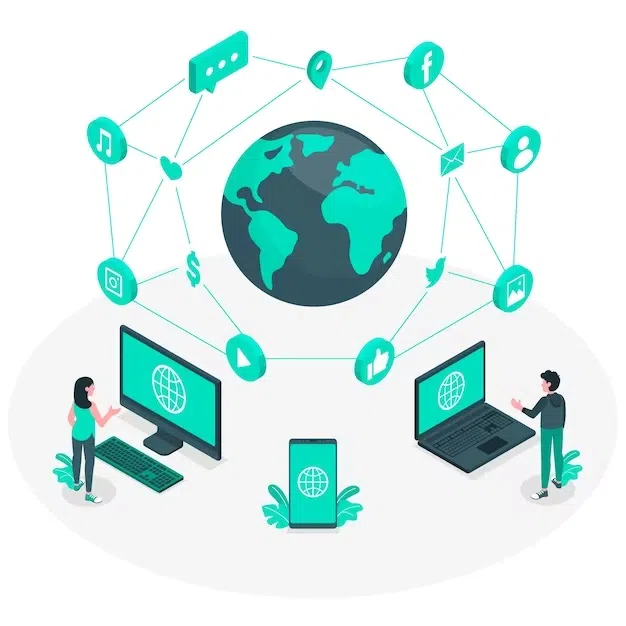How to get a working visa in the USA? How to apply? What are the prerequisites and what are the total requirements? Laws, regulations, eligibility criteria, different types of visas, and everything you want to know discover in this complete guide now!
In the fiscal year 2020, the U.S. government issued about 376,000 nonimmigrant visas for short-term employment in the country, according to official information from the U.S. Department of State. However, not all applicants are granted job visas, and many people may search for information about the visa application process without necessarily submitting an application, so it’s important to keep in mind that the number of people looking for work visas is likely much higher than the number of visas actually issued!
Types of working visas in the USA:
There are several types of work visas available in the USA, each with its own requirements and limitations. Here are some of the most common types of working permits:H-1B Visa:
This visa is for foreign workers in specialty occupations, such as engineers, scientists, and computer programmers. To be eligible, you must have a bachelor’s degree or higher in a related field.L-1 Visa:
This visa is for intra-company transferees, permitting transfer to a U.S. office for employees of a multinational corporation. You must have been employed by the employer for at least a year prior to the transfer in order to be eligible.O Visa:
This visa is for individuals with extraordinary ability or achievement in science, art, education, business, or athletics. It is also an option for Individuals who have shown outstanding achievement in the film or television industries.E Visa:
This visa is for treaty traders and investors from countries that have a treaty of commerce and navigation with the United States. It allows individuals to work in the U.S. for a company that they own or control.TN Visa:
Citizens of Canada and Mexico who work in specific professions covered by the North American Free Trade Agreement (NAFTA) are eligible for this visa. Examples of eligible professions include architects, engineers, and scientists.H-2A Visa:
This visa is for temporary agricultural workers who will be employed in seasonal or temporary jobs.H-2B Visa:
This visa is for temporary non-agricultural workers who will be employed in seasonal or peak-load jobs.There are also other less common types of working visas, such as the P visa for performers, the R visa for religious workers, and the I visa for representatives of foreign media.
How to get a work visa for the USA and what are the requirements?
Getting a work visa in the USA typically involves several steps, which may vary depending on the type of visa you are applying for. Here is a general overview of the process:Find a U.S. employer who is willing to sponsor you for a work visa. The employer must obtain a labor certification from the U.S. Department of Labor to demonstrate that there are no qualified U.S. workers available for the job.
Determine which type of work visa you are eligible for. Each visa type has its own requirements and application procedures.
Once you have identified the appropriate work visa, you or your employer must file a petition with the U.S. Citizenship and Immigration Services (USCIS).
If your petition is accepted, you will have to submit a visa application at a U.S. consulate or embassy in your country of residence. This usually requires a meeting with a consular official during which you must prove that you are eligible for the visa.
You will be given a visa and permitted to go to the US to work for your sponsoring employer if your visa application is granted. You must, however, abide by the terms of your visa, such as any standards relating to employment or length of stay, in order to keep your visa status.
Note that the requirements and process for obtaining a work visa in the U.S. can be complex and vary depending on the specific circumstances of your case. It is recommended that you consult with an immigration attorney to help guide you through the process.
How and where to apply for a work visa?
A U.S. embassy or consulate in your nation is where you can submit an application for a work visa to enter the United States. Your application will be examined and you will be interviewed by the embassy or consulate to see if you qualify for a work visa. You will need to present all necessary paperwork, including your passport, a copy of your petition that has been authorized, and evidence of your credentials and intended use of the United States.
On the website of the U.S. Department of State, you can find a list of American embassies and consulates located throughout the world. You must make an appointment at the embassy or consulate that is closest to your location in order to apply for a work visa. Depending on your place of origin, the appointment scheduling procedure and visa application criteria could change, so be sure to check the embassy or consulate’s website for further details.
Payment and cost of working visa in USA 2023:
The cost of a work visa for the United States varies depending on the type of visa and other factors such as the country of origin and the complexity of the application. There may be other fees connected with the visa application procedure, such as those for medical exams, document translations, and other services, in addition to the visa price.For instance, as of 2023, the fee for an H-1B visa application is $555, plus an additional $1,500 fee for employers with more than 25 employees. The fee for an L-1 visa application is $805. These fees are subject to change, so it is recommended that you check the U.S. Department of State’s website for current fee information.
FAQS:
1. what is visa sponsorship?
Visa sponsorship is the process by which a U.S. employer sponsors a foreign national for a work visa to come to the United States to work for their company. The employer must demonstrate that the position cannot be filled by a U.S. worker and that the foreign worker is qualified for the job.2. What are the new policies regarding employment visa?
U.S. Citizenship and Immigration Services (USCIS) declared on March 29, 2022, that it will prolong the validity of work permits for asylum applicants while renewal petitions are being processed. The time frame for auto-extension is 180 days at the moment.3. What are the restrictions and regulations regarding work permits?
Employer sponsorship, Visa limits, Duration of stay, Dependents, Employment restrictions, Visa revocation. These are some of the main restrictions and policies on work visas in the United States.In the US, getting a work visa can be a difficult and complicated process. Nonetheless, competent and talented international workers looking for employment opportunities and professional progression continue to flock to the United States. Foreign workers have a legal way to work in the US lawfully and advance their careers thanks to work visas!



